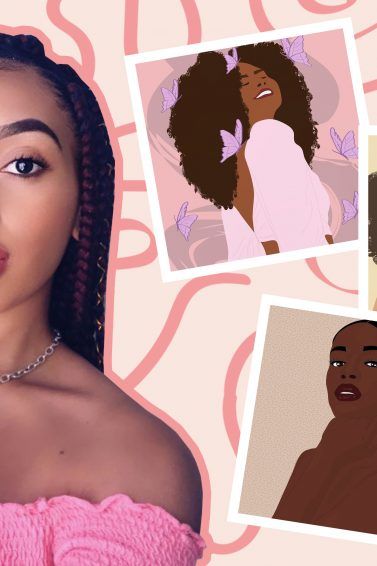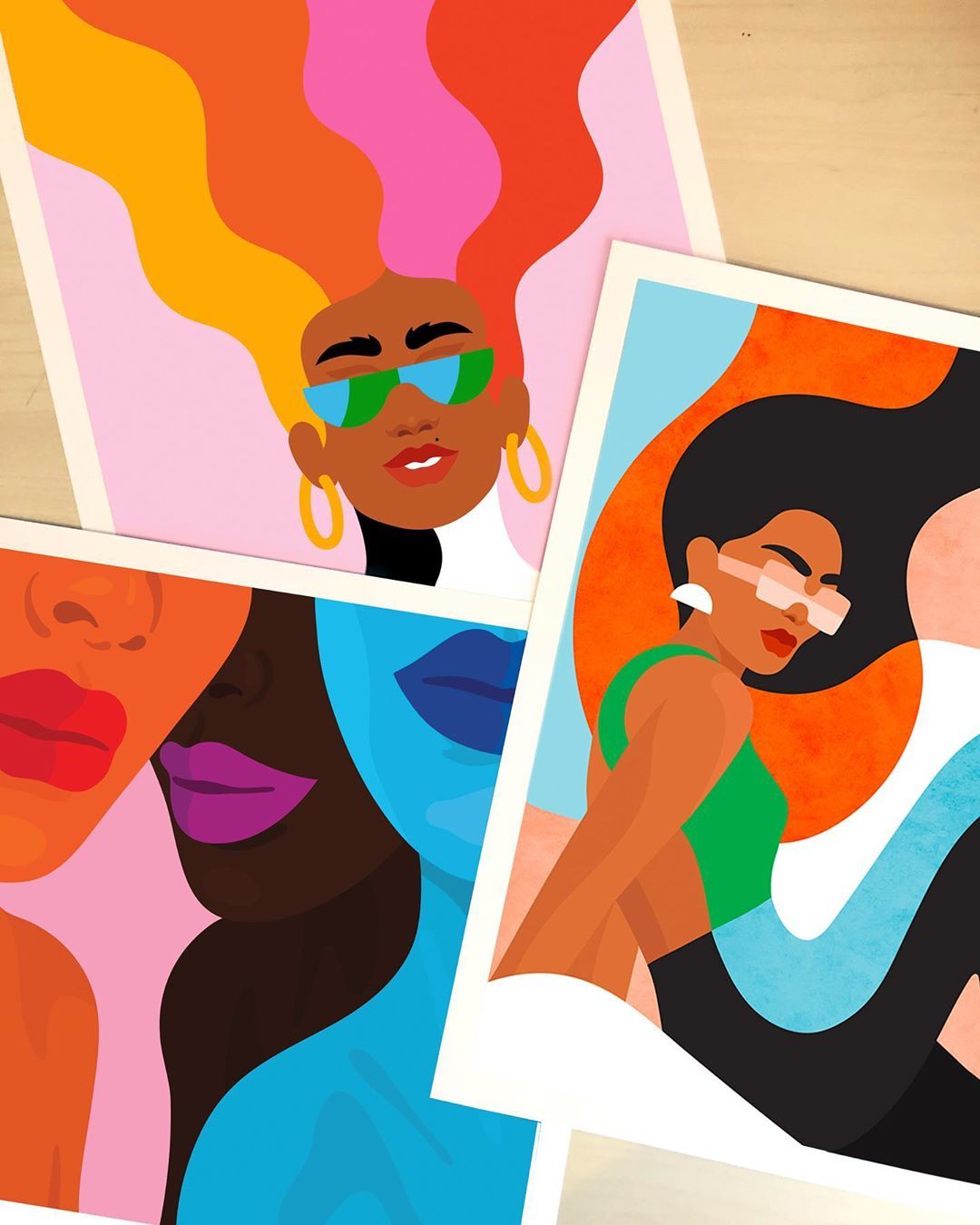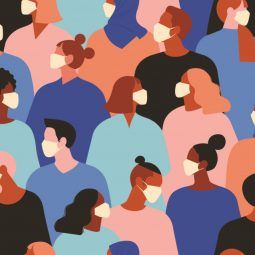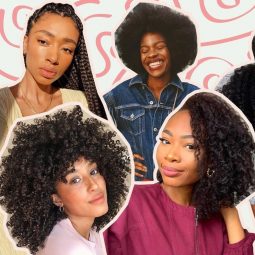
I Use My Illustrations To Empower Black Women and Celebrate Their Hair
We speak to rising illustrator, Rachael Saint Clair, about her natural hair journey and what inspires her to portray black hair in her art. Here, Rachael shares her own experiences as a black woman and the motivation to use her artwork to showcase the strength and beauty of black women.
Hi, Rachael! Tell us about yourself.
I’m from London, but I’m also St. Lucian. Most of my family members are female, and all these females have helped shape me into the woman I am today. I am my mum, my grandmother, my aunties and my cousins.
What has your hair journey been like?
My natural hair is very thick and when I was younger, I struggled to maintain it by myself. So, I got it relaxed when I was 15 and continued to do this until 2018, when I decided to get the big chop. My hair was extremely damaged and dry from relaxing it, and also dyeing it blonde, so I knew I had to stop and start again… Two years later and my hair is back to its previous length.
Now, my curls are beginning to flourish and I’m a lot happier. I’ve developed a stronger and healthier relationship with my hair.
Have you ever experienced hair discrimination or felt pressure to conform?
In the past, I felt particularly anxious about styling my hair for job interviews. In most instances, I wore a slick bun to appear more professional. I remember wearing box braids to an interview once and immediately noticing the change in the interviewer’s behaviour. I was being treated differently because of my hair. This gave me the clear message that I should always wear my slick bun like a shield and use it to fit in.
It took a long time for me to shake off this feeling and become comfortable wearing my natural hair, but I realised I had to be my true self. As much as you want potential employers to like you, you also need to like them and the company you’d be working for. You also need to feel like they can accept you and your hair as it is.
As much as you want potential employers to like you, you also need to like them and the company you’d be working for. You also need to feel like they can accept you and your hair as it is.
What made you want to become an illustrator? And, what do you love the most about it?

I studied Graphic Design and Illustration at university, which made me want to become an illustrator. I love the freedom of illustration, which I can’t always get with graphic design.
You mainly focus on portraying and celebrating black women and their hair in your art, why is that? And, what/who is your inspiration?
My original inspiration for my Sera Rae page and moniker is from my grandmother. The name Sera derives from her maiden name, and she’s honestly the most incredible woman. When she came over to London from St. Lucia, she was a trained dressmaker. But due to her being a black woman she was unable to get a job as one, and so she worked 3 housekeeping jobs to support her family.
To this day she still makes clothes, crochets, knits for herself and others. Her resilience and continued strength are what motivates me to show the world how incredible black women are. I want the world to see their strength, intelligence and beauty through my artwork.

Jade Purple Brown also inspires me. Although her illustration style is different from mine, it’s really unique. Her work is beautifully bold, inclusive and features strong female figures. Credit: @jadepurplebrown
In your opinion and personal experience, what connection is there between hair and identity as a black woman?
The two can sometimes be quite entangled. As a black woman, there are a lot of connotations that have been attached to how we wear our hair. For a long time having “good hair” meant having hair that was straight and conformed to Eurocentric beauty standards.
However, I think there has been a lot of reclaiming that has happened in recent years and pride in all types of hair. Reclaiming our hair and that feeling of pride has been a big part of the self-love journey.
Do you feel represented in the mainstream beauty industry?
I believe there’s been a shift for more inclusion for people of colour within the beauty industry, but it’s still nowhere near where it needs to be.
But with the current climate, I do feel like a real change could be happening. Voices are calling out brands to take action and with the momentum being kept up, perhaps some change will come.
I believe there’s been a shift for more inclusion for people of colour within the beauty industry, but it’s still nowhere near where it needs to be.
What can hair brands do to make you feel more represented?
I’d love to see brands advertise with different types and styles of hair – I guess this is a wider point even on TV shows and films – but black people are not limited to two hairstyles. We are not homogenous; our hairstyles are so versatile. I think brands could do a better job of showing this.
What are your favourite black hairstyles?

I love braids! I’ve learnt how to do them myself and I’ve never looked back. I can change my hair colour without having to bleach it and they are so versatile. You can wear box braids, feed-in braids, goddess braids, passion twists and so much more.
What does your hair routine look like?
My hair routine depends on the week and whether it’s a wash day or not. If it’s a wash day, I wash my hair using a hydrating shampoo and conditioner. After that, I section it and apply aloe vera gel, curl cream and some shine spray. My goal is to make my curls look really defined and healthy!
Editor’s tip: Our fave hydrating duo for natural hair? The Love Beauty And Planet Hope & Repair Shampoo and Conditioner! This coconut-infused duo will help nourish and repair your tresses, while also making them feel and look healthier.
Any hair advice to share?
Never let a bad hair day get you down, there’s always tomorrow.
Support and follow Rachael’s Instagram account: https://www.instagram.com/serarae.art/

